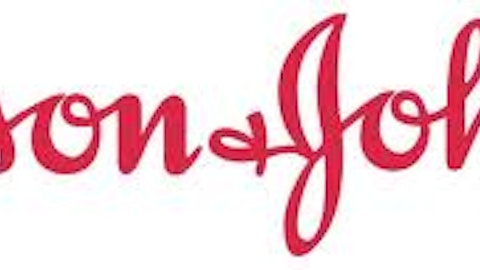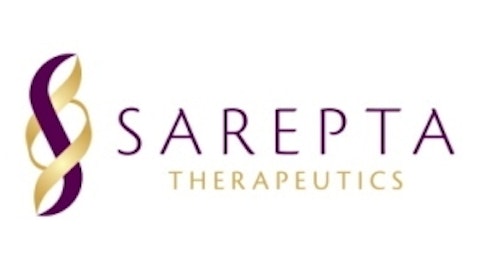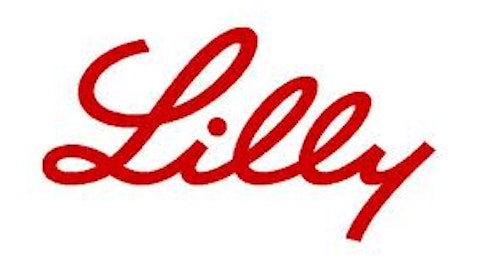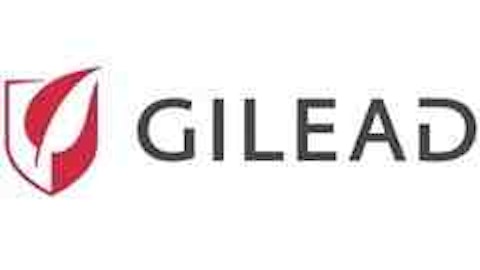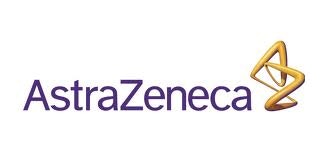
Last week we took a closer look at prostate cancer’s biggest players. This week I’ll be shifting the focus to the second most-common cancer type: breast cancer.
The skinny on breast cancer
Closely following prostate cancer is breast cancer, which is forecast to be diagnosed in nearly 235,000 people in 2013 — including more than 2,200 men! However, make no mistake about it, excluding for skin cancers, breast cancer is the most common cancer diagnosis that a woman is likely to receive.

Source: Centers for Disease Control and Prevention.
Like we saw with prostate cancer, five-year survival rates have been steadily rising for female breast cancer suffers. In 1975-1977, five-year survival rates were 75%, but have since improved to approximately 90% as 2002-2008 according to the American Cancer Society (link opens PDF). Part of this improvement can be attributed to better public awareness with regard to earlier detection, while other aspects, including better treatment options and a reduction in the use menopausal hormone therapy, which was discovered to contribute to cancer-causing risk, have played their part.
The treatment options for those with breast cancer will vary based on the stage of the disease, but most often involves either breast-conserving surgery or mastectomy (removal of the entire breast). Numerous studies have shown that breast-conserving surgery when combined with radiation compares just as favorably as a mastectomy in terms of long-term survival, but again, each case will vary. Additional treatments may include chemotherapy, hormone therapy, or radiation therapy.
Where investment dollars are headed
Unlike prostate cancer, breast cancer has a number of players in both the early stages and late stages of the disease. Let’s first examine some of the early stage breast cancer players in post-menopausal women.
By far, the most common treatment pathway in early stage breast cancer is through hormonal therapy (assuming the tumor is hormone-receptor positive). This occurs by reducing estrogen production through the use of aromatase inhibitors or blocking the effects of estrogen on cancerous cells with selective estrogen receptor modulators, or SERMs. With a definitive link between estrogen production and cancer cell growth, these treatments revolve specifically around estrogen reduction or suppression.
Aromatase inhibitors: Many aromatase inhibitors have been around for the better part of a decade or longer, so most have come off patent, including Arimidex by AstraZeneca plc (ADR) (NYSE:AZN) and Femara by Novartis AG (ADR) (NYSE:NVS). Both drugs work by temporarily blocking the activity of the aromatase enzyme, which the body uses in order to make estrogen. Aromasin — another aromatase inhibitor made by Pfizer Inc. (NYSE:PFE), which saw its patent expire in 2006 — inactivates the enzyme on a permanent basis.
SERMs: Another way of reducing estrogen’s impact on the body is by creating drugs which bind to estrogen receptors. AstraZeneca plc (ADR) (NYSE:AZN)’s Nolvadex, for example, can act as both an agonist and an antagonist in that it suppresses estrogen’s effects in the breast but can mimic its effects in other parts of the body such as the uterus. Like the above players, Nolvadex came off patent exclusivity a long time ago. Eli Lilly & Co. (NYSE:LLY)‘s Evista, which is protected by patent through 2014, is another SERM, although it’s primarily prescribed for more invasive types of breast cancer that have invaded surrounding tissues.
All told, it’s quite common for early stage breast cancer suffers to be prescribed either Nolvadex or some combination of an aromatase inhibitor and a SERM.
As you might have guessed, there’s also quite a bit of research and money going on into late-stage/metastatic breast cancer. Let’s have a look at some of the most common advanced-stage treatments.
Herceptin: This is Roche Holding Ltd. (ADR) (PINK:RHHBY)‘s wonder drug, approved in 1998 for patients with HER2-positive metastatic breast cancer and responsible for $4.8 billion in global sales in 2011. As you probably inferred, Herceptin targets the HER2 protein by suppressing it and giving standard chemotherapy a chance to be effective. In addition to being approved for metastatic breast cancer, Herceptin gained an additional indication in 2006 for early stage breast cancer following a primary treatment for HER2-positive patients.
Tykerb & Xeloda: In 2007, advanced stage breast cancer suffers got an additional treatment option with the combination of GlaxoSmithKline plc (ADR) (NYSE:GSK)‘s Tykerb and Roche’s Xeloda. The combo was approved as a secondary treatment to be used after patients have tried Herceptin, a taxane, and an anthracycline. Unlike Herceptin, according to the FDA’s press release in 2007, Tykerb is a small molecule able to enter the cancer cell and upset its functionality from within rather than attacking the HER2 protein parts on the outside of the cell as Herceptin does. It’s worth noting, however, that Herceptin sales continue to dominate that of the Tykerb and Xeloda combination.
Perjeta: Also developed by Roche Holding Ltd. (ADR) (PINK:RHHBY), Perjeta was approved by the FDA in June to treat metastatic HER2-positive breast cancer for those patients who have received no prior treatment. It was approved in combination with Herceptin and chemotherapy agent docetaxel. Based on clinical trials, Perjeta extended the overall median progression-free survival to 18.5 months compared to just 12.4 months for the placebo.
However, not every drug vying for approval in breast cancer has received the green light from the FDA — not even the incredibly dominant Roche Holding Ltd. (ADR) (PINK:RHHBY). In 2011, Roche Holding Ltd. (ADR) (PINK:RHHBY)’s Avastin, which had been approved by the FDA under an accelerated review basis to treat breast cancer in 2008, had its approval revoked. The FDA ruled that Avastin’s survival benefits in breast cancer were minimal compared to its potential serious side effects including high blood pressure and hemorrhaging.
What’s coming down the pipeline
Now that you have a better feel for what the current standard of treatment looks like for the early and late stages of breast cancer, let’s take a look at some of the upcoming treatments that could revolutionize breast cancer treatment.
Kadcyla: Developed by Roche Holding Ltd. (ADR) (PINK:RHHBY) (did you really expect anyone else?) and ImmunoGen, Inc. (NASDAQ:IMGN) , Kadcyla (formerly T-DM1) received FDA approval just three weeks ago as a secondary treatment for HER2 positive breast cancer. What makes Kadcyla so unique is that it combines successful HER2 protein suppressing drug Herceptin with ImmunoGen, Inc. (NASDAQ:IMGN)’s targeted antibody payload technology which allows concentrated forms of chemotherapy toxins to be delivered directly to tumor cells with minimal healthy cell damage. This combination gives Herceptin another revenue pathway (with European patents set to begin expiring next year) while allowing ImmunoGen, Inc. (NASDAQ:IMGN) to show off its targeted antibody payload technology to the world. In clinical trials, Kadcyla demonstrated progression-free survival of 9.6 months and an overall median survival time of 30.9 months compared to a PFS of 6.4 months and a median survival time of 25.1 months for the control arm led by Glaxo’s Tykerb & Roche’s Xeloda.
Lymphoseek: Diagnostics can be just as important in dealing with breast cancer as the treatments, which makes Navidea Biopharmaceuticals Inc (NYSEMKT:NAVB)‘ Lymphoseek a game-changer. Lymphoseek is an external lymph-node imaging and intra-operative lymphatic mapping diagnostic device that will help physicians determine whether breast cancer has spread into adjacent lymph nodes. Based on numerous comparative trials versus the current standard diagnostic method, Pharmalucence’s sulfur colloid injection, Lymphoseek produced fewer false positive and fewer adverse reactions. Lymphoseek was denied approval in September because of FDA concerns related to a third-party manufacturer, but I don’t anticipate it being a long-term problem for the company.
Nexavar + Xeloda: I wouldn’t place this one at the top of my list, but early stage results from the combination of Onyx Pharmaceuticals, Inc. (NASDAQ:ONXX)‘ liver and kidney cancer drug Nexavar and Roche Holding Ltd. (ADR) (PINK:RHHBY)’s Xeloda signify that there may be potential for the drug as a breast cancer treatment. Phase 3 trials are currently under way, but we likely won’t know the results for quite some time.
Your best investment
If you haven’t figured it out by now, Roche Holding Ltd. (ADR) (PINK:RHHBY) is clearly the company to own if you want breast cancer treatment exposure! Roche is finding meaningful new ways to extend the patent life of its blockbuster Herceptin through combination therapies and has an array of cancer combatants that work via different pathways which gives it the upper hand when it comes to finding new combination partners.
If you’re willing to take a bit more risk, I happen to think ImmunoGen, Inc. (NASDAQ:IMGN) will offer the best risk-reward ratio. Although it’ll only see somewhere in the 3% to 5% range with regard to royalties on sales of Kadcyla, it’s all about flaunting its TAP technology. Geared as a combination therapy, it won’t take long for ImmunoGen, Inc. (NASDAQ:IMGN)’s technology to start being combined with blockbuster FDA-approved drugs to increase PFS and median overall survivals for multiple types of cancers — including breast cancer.
Stay tuned next week when we tackle the current and upcoming therapies for the treatment of lung cancer in this Tackling Cancer series.
The article Tackling Cancer: Breast Cancer’s Biggest Current & Upcoming Players originally appeared on Fool.com and is written by Sean Williams.
Fool contributor Sean Williams has no material interest in any companies mentioned in this article. You can follow him on CAPS under the screen name TMFUltraLong, track every pick he makes under the screen name TrackUltraLong, and check him out on Twitter, where he goes by the handle @TMFUltraLong.The Motley Fool recommends ImmunoGen.
Copyright © 1995 – 2013 The Motley Fool, LLC. All rights reserved. The Motley Fool has a disclosure policy.
